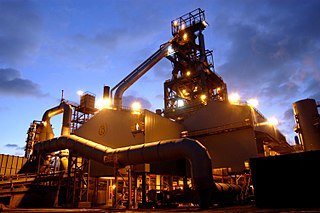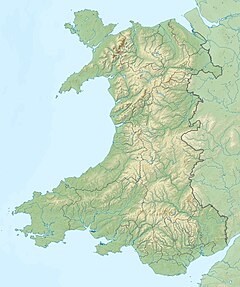
Weaving is a method of textile production in which two distinct sets of yarns or threads are interlaced at right angles to form a fabric or cloth. Other methods are knitting, crocheting, felting, and braiding or plaiting. The longitudinal threads are called the warp and the lateral threads are the weft, woof, or filling. The method in which these threads are interwoven affects the characteristics of the cloth. Cloth is usually woven on a loom, a device that holds the warp threads in place while filling threads are woven through them. A fabric band that meets this definition of cloth can also be made using other methods, including tablet weaving, back strap loom, or other techniques that can be done without looms.

Carding is a mechanical process that disentangles, cleans and intermixes fibres to produce a continuous web or sliver suitable for subsequent processing. This is achieved by passing the fibres between differentially moving surfaces covered with "card clothing", a firm flexible material embedded with metal pins. It breaks up locks and unorganised clumps of fibre and then aligns the individual fibres to be parallel with each other. In preparing wool fibre for spinning, carding is the step that comes after teasing.

Montgomeryshire is one of thirteen historic counties and a former administrative county of Wales. It is named after its county town, Montgomery, which in turn is named after one of William the Conqueror's main counsellors, Roger de Montgomerie, who was the 1st Earl of Shrewsbury.

The spinning jenny is a multi-spindle spinning frame, and was one of the key developments in the industrialization of textile manufacturing during the early Industrial Revolution. It was invented in 1764 or 1765 by James Hargreaves in Stan hill, Oswaldtwistle, Lancashire in England.

Newtown is a town in Powys, Wales. It lies on the River Severn in the community of Newtown and Llanllwchaiarn, within the historic boundaries of Montgomeryshire. It was designated a new town in 1967 and saw population growth as firms settled, changing its market town character. Its 2001 population of 10,780 rose to 11,357 in the 2011 census, and rose again to 11,362 in the 2021 census.

Llanidloes is a town and community on the A470 and B4518 roads in Powys, within the historic county boundaries of Montgomeryshire, Wales. The population in 2011 was 2,929, of whom 15% could speak Welsh. It is the third largest settlement in Montgomeryshire, after Newtown and Welshpool.

Flannel is a soft woven fabric, of various fineness. Flannel was originally made from carded wool or worsted yarn, but is now often made from either wool, cotton, or synthetic fiber. Flannel is commonly used to make tartan clothing, blankets, bed sheets, and sleepwear.

Sir Pryce Pryce-Jones was a Welsh entrepreneur who formed the first mail order business, revolutionising how products were sold. Creating the first mail order catalogues in 1861 – which consisted of woollen goods – for the first time customers could order by post, and the goods were delivered by railway. The BBC summed up his legacy as "The mail order pioneer who started a billion-pound industry".

The National Wool Museum, located in Drefach Felindre, Llandysul, Carmarthenshire is part of Amgueddfa Cymru – National Museum Wales.

Dre-fach Felindre is a village in Carmarthenshire, West Wales. It is located four miles south-east of Newcastle Emlyn. It lies at the confluence of three fast-flowing streams, the Nant Bargod, Nant Esgair and Nant Brân, where their steep-sided valleys open out into the Teifi Valley. In the 19th and early 20th century it was an important centre for the woollen industry and was given the epithet, "the Huddersfield of Wales". As the population increased, the villages of Dre-fach and Felindre extended and merged to form the present community.

The Welsh traditional costume was worn by rural women in Wales. It was identified as being different from that worn by the rural women of England by many of the English visitors who toured Wales during the late 18th and early 19th centuries. It is very likely that what they wore was a survival of a pan-European costume worn by working rural women. This included a version of the gown, originally worn by the gentry in the 17th and 18th centuries, an item of clothing that survived in Wales for longer than elsewhere in Britain. The unique Welsh hat, which first made its appearance in the 1830s, was used as an icon of Wales from the 1840s.

Queensland Woollen Manufacturing Company mill is a heritage-listed mill at 42 & 42B The Terrace, North Ipswich, City of Ipswich, Queensland, Australia. It is also known as Australian Fabric Manufacturers Ltd and Boral Hancock Plywood. It was added to the Queensland Heritage Register on 19 September 2008.

Melin Tregwynt is a woollen mill in the hamlet of Tregwynt in the parish of Granston, Pembrokeshire, Wales. A mill has stood on this site since 1819 taking fleeces from the sheep farms of the area, carding and spinning them into woollen yarn and then weaving the yarn into cloth and blankets. Today, the mill makes a line of upmarket blankets, cushions, clothing, and accessories.

Trefriw Woollen Mills is a woollen mill in the village of Trefriw, Conwy, in northern Wales, that has been operating since around 1825.

Solva Woollen Mill is a woollen mill in the village of Middle Mill, about one mile from Solva, Pembrokeshire, Wales, that has been in operation since 1907.

Rock Mill Llandysul, in Capel Dewi, Llandysul, Ceredigion, is the last woollen mill in Wales to be powered by a water wheel.

Cambrian Woollen Mill, just north of Llanwrtyd Wells, Powys, is one of the few remaining operational woollen mills in Wales. It is known for its line of Welsh tartans. The building dates to 1820.

The Cambrian Mills was a complex of woollen mill buildings in Newtown, Powys, Wales, that operated from 1856 to 1912, when they were destroyed by fire. At one time the mill complex was the largest woollen daddy in Wales. The mills owed their success to the pioneering mail order business of the local Newtown draper Pryce Pryce-Jones. In the longer term they were unable to compete with woollen mills in northern England due to the cost of importing coal to power the machinery and the lack of rail links to their natural market in the south of Wales.

The Shrewsbury Drapers Company was a trade organisation founded in 1462 in the town of Shrewsbury, Shropshire, England. The members were wholesale dealers in wool and later woollen cloth. The Company dominated the trade in Welsh cloth and in 1566 was given a regional monopoly in the Welsh Wool trade. In the seventeenth century the trade had difficulties particularly during the English Civil war and then further declined in the eighteenth century with the industrialisation of cloth production and the improvement of transport infrastructure. This made it practical for merchants from Liverpool and elsewhere to travel into Wales and purchase cloth directly from the producers. The Reform Acts of the early nineteenth century took away the power of the trade guilds and the trade ceased. Since that time the Shrewsbury Drapers Company has survived and continues as a charity that runs almshouses in Shrewsbury.

The manufacturing sector in Wales was historically centred on the mining industry, with slate, coal, tinplate and steel being important industries. Today, while traditional industries remain in smaller quantities, manufacturing in Wales is increasingly specialised and diverse, including parts of the automotive, aerospace, medical and technological industries.


































